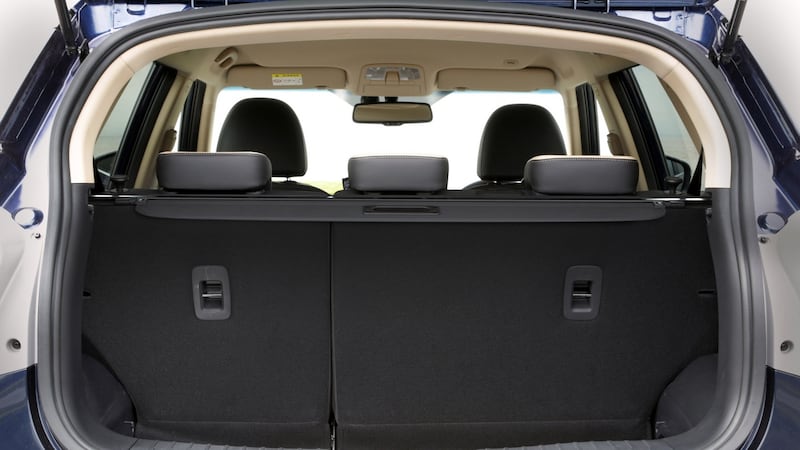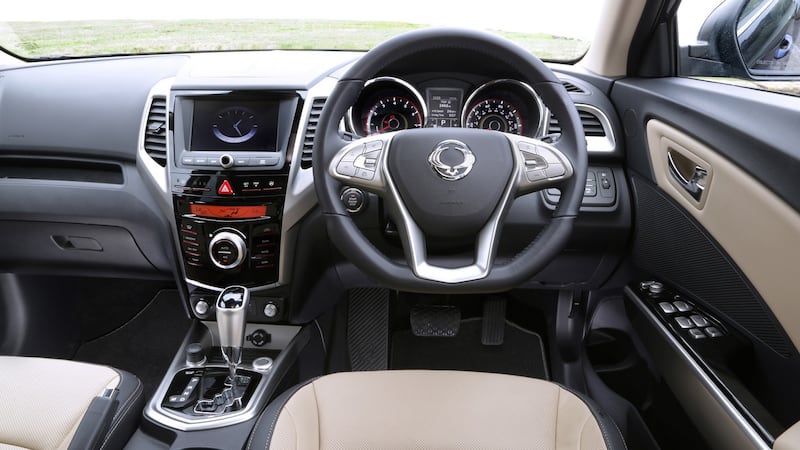At last autumn's Frankfurt motor show, two Korean brands butted up against each other in the corner of one of the vast halls. Kia, an increasingly smart and stylish mainstream offering, several years into its attempt to become an established player in Europe, paraded its wares in a swish stand, better than many old-school rivals.
Facing it at a 90-degree angle was Ssangyong, a Korean budget brand with a market reputation and model strategy similar to what Kia had 15 years ago. There was one striking feature on the Ssangyong stand, its new Tivoli crossover, which looked remarkably similar to Kia's funky-looking Soul.
If Ssangyong wanted to goad its neighbour with this latest model, it achieved its goal.


The Tivoli represents a new phase in the Ssangyong game plan. It is a well-established strategy among Korean brands. Start out at the budget end of the market with old- school tech, basic features but as much family functionality as you can muster.
Ignore the snide remarks and sneers from rivals and motoring hacks such as yours truly, then after a time, gradually smarten up the offerings. If you have any doubts about the potential of this strategy, look to Hyundai.
It is unrecognisable from the brand that sold boxy Accent models in the 1990s. It is a proper mainstream brand and it has moved on to following the Toyota playbook, right down to preparing to launch a Lexus-like premium sub- brand in the coming years, under the Genesis moniker.
So what we have here is a brand that's in the early stages of evolution. So early, in fact, that its national headquarters is a set of portable cabins on the Naas Road. It is a striking contrast to the glass palaces that symbolised the folly of the motor trade during the Celtic Tiger years.
To date Ssangyong’s market pitch has always been bulky, spacious cars for low-end prices. The underpinnings and engine tech are old-school and so are not burdened with heavy development costs loaded on the price. And the designs were decidedly ugly.
Technology change
The problem was – and is – that the motor industry is going through a radical technology change and there is a race to reduce emissions, partly driven by ever tighter tax regimes punishing those who aren’t continuously developing.
Therefore, its older tech was increasingly penalised by falling into higher tax brackets than rivals. Ssangyong could lure buyers into showrooms with tempting sticker prices on big family cars, but the same budget buyers baulked at the annual motor tax hit.
It didn’t help that the styling of the Rexton and Rodius was bizarre. It seemed as if the initial plans got lost in translation or that some of the parts manufacturers were working in metric while the others were working off the imperial system. The Rodius was as fetching as a warthog.
Suddenly with the Tivoli, Ssangyong has got a credible- looking car. It might look a lot like the Kia Soul, but in the glasshouse of car design, few rivals should dare to throw stones. Consider how many mid-sized premium cars look like strikingly similar to the BMW 3-Series, for example.
It is entering the crossover segment, however, where design is the hot issue. Consider the eye-catching appeal of the Renault Captur, Nissan Juke or Citroen C4 Cactus.
The Ssangyong looks sharp in its own right, but is not quite as original or head-turning as these rivals.
Inside, the styling is again strikingly similar to rivals, a rather formulaic approach to a funky crossover. Yet it is by no means dull and there are plenty of smart touches in the cabin. Unlike several family hatchbacks out there at present, it is a nice play to be.
The biggest virtue of the Ssangyong remains its space. There is really impressive legroom both in the front and rear, while the boot space at 423 litres seems to be class- leading. As a practical family car this works, better than several rivals.
The Tivoli also has a competitive diesel engine with emissions largely on a par with its rivals. Emissions of 109g/km – and a motor tax bill of €190 – are in the same ballpark as rivals. It is a decent workhorse, much better than the noisy, rattling old engine blocks Ssangyong used to buy in from the likes of Mercedes.
Its torque delivery isn’t quite as smooth as the well-established 1.5-litre fitted to the Juke and Captur, but it is credible.
The ride and handling is a little rudimentary and doesn’t match rivals on bumpy roads, but again it is not something worth lingering on for too long. It is unsophisticated and there are better rivals in this regard.
Ssangyong rivals
So how does it rate against those rivals? Ssangyong is fond of referencing the likes of the Nissan Juke and Renault Captur, although both are slightly smaller than the Tivoli.
When we collect the car, another name is dropped: the Mini Countryman. There are other rivals, of course. One obvious one is the previously-mentioned Kia Soul.
Pricing remains the key performer. For €21,495, you get a remarkably spacious family crossover, with styling that is funky enough to compete and engineering underpinnings that doesn’t disgrace.
Spend another €3,500 and you get a level of specification that is unmatched by rivals for the price.
I haven’t driven the automatic version but it’s not worth consideration, given its price. Asking an extra €4,500 or more for an automatic transmission is ridiculous when rivals such as Citroen charge an extra €1,500 for its automatic. The Ssangyong automatic’s higher emissions also pushes the car up four tax bands.
Perhaps the most striking trait of the Tivoli is that for all the impressive space, the supposed budget brand is pitching its price in line with rivals. For example, you can get a Renault Captur for €21,390, a top-of- the-range Citroen C4 Cactus diesel for €23,495 or a Nissan Juke 1.5 diesel for €21,745.
Even the premium Mini Countryman comes in diesel from €24,610. Suddenly the Ssangyong doesn’t seem quite the budget brand as it is perceived – or even as it wants to be perceived.
With this Korean you get a lot of extra features and bonuses such as five-year unlimited warranty and roadside assistance. The big question, however, will be what the resale values for a Tivoli will be in three or four years compared to those aforementioned rivals. Brand plays a big part on the used market.
Again, Ssangyong can look to the template adopted by its fellow Koreans – and the Japanese brands of the 1980s – to see how to overcome this issue.
For now, the Tivoli represents a notable next move by Ssangyong as it marches towards the mainstream market. It has rapidly closed the gap on rivals. It might not be class-leading but it deserves consideration. On the basis of this car, expect to see significantly more Ssangyongs on our roads in the years to come.
The lowdown: Ssangyong Tivoli
Engine: 1597cc diesel engine putting out 115bhp @, 3,400rpm and 300Nm of torque from 1,500rpm
Fuel economy: 4.2 l/100km (67.3 mpg)
CO2 (motor tax): 109 g/km (€190)
Price: €24,995 as tested (starting price – €21,495)











